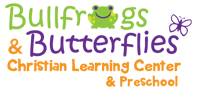CREATIVE CURRICULUM:
The Creative Curriculum balances both teacher-directed and child-initiated learning, with an emphasis on responding to children’s learning styles and building on their strengths and interests. This curricula applies the latest theory and research on best practices in teaching and learning and the content standards developed by states and professional organizations. While keeping the original environmentally-based approach it clearly defines the teacher’s vital role in connecting content, teaching, and learning for preschool children. It features goals and objectives linked directly to our valid and reliable assessment instrument.
The Creative Curriculum® for Preschool translates new research and theory from the field of early childhood education into a practical, easy-to-understand approach to working with children and their families. It is a comprehensive curriculum with a clear organizational structure and a particular focus on interest areas.
Theory and Research
Child development theory and scientific research are the foundation of The Creative Curriculum for Preschool. They inform decision making, influence our view of children, and are the basis for all the recommendations we’ve included.
Abraham Maslow–Basic needs and learning Erik Erikson–The emotions and learning
Jean Piaget–Logical thinking and reasoning Lev Vygotsky–Social interaction and learning
Howard Gardner–Multiple intelligences Sara Smilansky–Play and learning
Research on learning and resiliency Research on learning and the brain
Not only is every aspect of The Creative Curriculum based on sound developmental theory and evidence-based research, but numerous research studies have been conducted to validate its effectiveness.
back to organizational structure
How Children Develop and Learn
Knowing how children develop and learn is the basis for planning your program, selecting materials, and guiding children’s learning. By knowing, we mean appreciating general patterns of growth in all children as well as the differences you will certainly encounter among individual children.
The Creative Curriculum enhances social/emotional, physical, cognitive, and language development. Goals and objectives for each of these developmental areas are organized into The Creative Curriculum Developmental Continuum for Ages 3-5.
Because children do not master a skill all at once, each objective has three steps that illustrate the typical sequence of development. A special category called forerunners helps you look at emerging behaviors for each objective and enables you to assess all children’s learning and development, including those with disabilities or developmental delays.
You’ll find that The Creative Curriculum Developmental Continuum for Ages 3-5 is an effective way to focus your observations of children and document their progress in relation to the goals and objectives. This tool has been proven valid and reliable in a wide range of research studies.
The Learning Environment
The learning environment is the structure of the classroom that sets the context for teaching and learning. The Creative Curriculum shows you how to:
set up the physical environment and maintain interest areas
establish a classroom structure that includes the daily routine and schedule, choice times, and small- and large-group times
create a classroom community that promotes positive relationships and
where children make friends and learn social problem-solving skills
Interest Areas
The physical space of The Creative Curriculum classroom is organized into 10 indoor interest areas:
Blocks
Dramatic Play
Toys and Games
Art
Library
Discovery
Sand and Water
Music and Movement
Cooking
Computers
The 10 indoor interest areas plus the outdoor space offer multiple opportunities for children to explore, discover, and learn.
Interest areas provide a setting for children to learn academic content and apply skills.
What Children Learn
On the basis of scientific research and state and professional standards, The Creative Curriculum identifies the knowledge, skills, and concepts important for preschool children to acquire in each content area: literacy, math, science, social studies, the arts, and technology.
We describe the key components of these content areas:
Literacy: vocabulary and language, phonological awareness, letters, words, print, comprehension, books and other texts, and sources of enjoyment
Mathematics: numbers; patterns and relationships; geometry and spatial awareness; measurement; and data collection, organization, and representation
Science: physical science, life science, and earth and the environment
Social Studies: spaces and geography, people and how they live, people and the environment, and people and the past
The Arts: dance, music, drama, and the visual arts
Technology: awareness of technology, basic operations and concepts, technological tools, and people and technology
Most importantly, we explain how to teach these subject areas in ways that respect how preschool children develop and learn.
The Teacher’s Role
The Creative Curriculum for Preschool describes the teacher’s role as an ongoing cycle of observing children, guiding their learning, and assessing their progress. We show you how to motivate children, build on their prior knowledge and strengths, and support their learning in an intentional way by using a variety of strategies to increase their knowledge, skills, and understandings.
You’ll find out how to use assessment information to guide children’s learning throughout the day: during large- and small-group times, routine times, long-term studies, and in interest areas.
The Family’s Role
Home and school are a young child’s two most important worlds. Children must bridge these two worlds every day. If home and school are connected in positive and respectful ways, children feel secure. However, children suffer when the two worlds are at odds because of apathy, lack of understanding, or an inability to work together. Teachers can build a true partnership when they truly value the family’s role in a child’s education and recognize how much they can accomplish by working with families.
The Creative Curriculum for Preschool provides you with guidance on getting to know families, welcoming and communicating with them regularly, partnering for children’s learning, and responding to challenging situations.

Comments are closed here.